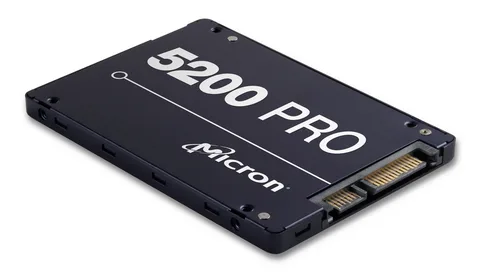Upgrading your computer with a desktop SSD is one of the most impactful changes you can make to improve speed, responsiveness, and overall performance. For years, traditional hard disk drives (HDDs) were the standard for desktop storage, but solid-state drives have transformed the way modern PCs handle data. By replacing mechanical components with high-speed flash memory, SSDs deliver instant access to files, faster boot times, and greater durability. Whether you use your PC for gaming, professional work, or everyday tasks, a desktop SSD can significantly enhance your computing experience.
How a Desktop SSD Works
A desktop SSD stores data on NAND flash chips instead of spinning platters. Because there are no moving parts, data access is purely electronic, eliminating delays caused by physical read/write heads. This means your operating system can load in seconds, applications can launch almost instantly, and files can transfer at impressive speeds.
The Role of NAND Flash
The type of NAND flash used in an SSD plays a key role in its performance and lifespan. Single-Level Cell (SLC) NAND offers the fastest speeds and greatest durability but is costly. Multi-Level Cell (MLC) and Triple-Level Cell (TLC) NAND strike a balance between performance and price, while Quad-Level Cell (QLC) NAND provides higher capacities at a lower cost, though with slightly reduced endurance.
SSD Controllers and Firmware
An SSD’s controller acts as its brain, managing how data is stored, retrieved, and maintained. Paired with optimized firmware, the controller ensures consistent performance while balancing wear across the drive’s cells to prolong its lifespan.
Why Upgrade to a Desktop SSD?
Replacing an HDD with an SSD can completely transform your computer’s speed and responsiveness.
Dramatically Faster Performance
A desktop SSD can reduce boot times from minutes to seconds. Applications open quickly, file transfers are rapid, and multitasking becomes smoother. For gamers, this means faster game load times; for professionals, it means less waiting and more productivity.
Improved Reliability
Because SSDs have no mechanical parts, they are less prone to failure from physical shock or wear. This reliability is especially important for desktops that run for long hours or handle critical data.
Energy Efficiency and Reduced Heat
Although desktops are less sensitive to power consumption than laptops, SSDs still use less energy than HDDs. This results in lower heat output, which helps maintain a cooler system and reduces strain on cooling components.
Choosing the Right Desktop SSD
Selecting the best SSD for your desktop involves understanding your system’s compatibility, your storage needs, and your performance requirements.
Form Factors and Interfaces
- 2.5-inch SATA SSDs are widely compatible and easy to install in most desktops.
- M.2 SSDs connect directly to the motherboard and can use either SATA or NVMe interfaces.
- PCIe NVMe SSDs provide the highest speeds, ideal for heavy workloads and gaming enthusiasts.
Storage Capacity
Capacity depends on your usage. For basic computing, 500GB may be enough, while gamers, video editors, and content creators may prefer 1TB or 2TB. Large-capacity SSDs offer plenty of space for operating systems, software, and large files.
Performance Ratings
Look for high sequential read/write speeds and strong random performance (IOPS). NVMe drives can deliver speeds exceeding 7,000 MB/s, making them ideal for demanding applications.
Installation Process
Installing a desktop SSD is straightforward, but it’s important to follow the right steps.
Preparation
Before installing, back up important data and check your desktop’s specifications for compatibility. Have the required tools and cables ready, and ensure you have a mounting bracket if needed.
Physical Installation
For a 2.5-inch SATA SSD, connect it to your motherboard via a SATA cable and to your power supply with a SATA power connector. For M.2 or PCIe drives, insert them into the correct motherboard slot and secure them with a screw.
Data Migration or Fresh Install
You can either clone your existing drive to the SSD or perform a fresh installation of your operating system. Cloning saves your settings and files, while a fresh install ensures a clean and optimized system.
Maintaining a Desktop SSD
SSDs require less maintenance than HDDs, but proper care ensures consistent performance and a long lifespan.
Enable TRIM
TRIM helps the SSD manage unused data blocks, keeping write speeds consistent over time. Most modern operating systems enable TRIM automatically.
Update Firmware
Manufacturers often release firmware updates to improve performance and stability. Checking for updates periodically helps keep your SSD running efficiently.
Avoid Overfilling the Drive
Leaving some free space on your SSD helps maintain speed and reduces wear. A general rule is to keep 10–20% of the capacity free.
Future of Desktop SSD Technology
The SSD market continues to evolve, with improvements in speed, capacity, and affordability. PCIe 5.0 SSDs are now emerging, offering even faster data transfer rates to support demanding workloads. 3D NAND stacking technology is also allowing manufacturers to increase storage density while maintaining high performance.
Conclusion
Switching to a desktop SSD is one of the most effective upgrades for any PC user seeking speed, reliability, and efficiency. By eliminating mechanical parts, SSDs offer lightning-fast data access, longer lifespans, and lower energy consumption. Whether you’re building a new desktop or upgrading an existing one, investing in a quality SSD will provide a noticeable and lasting boost to your computing experience. For both casual users and professionals, the benefits of making the switch are clear—once you experience the speed of an SSD, you’ll never want to go back.



